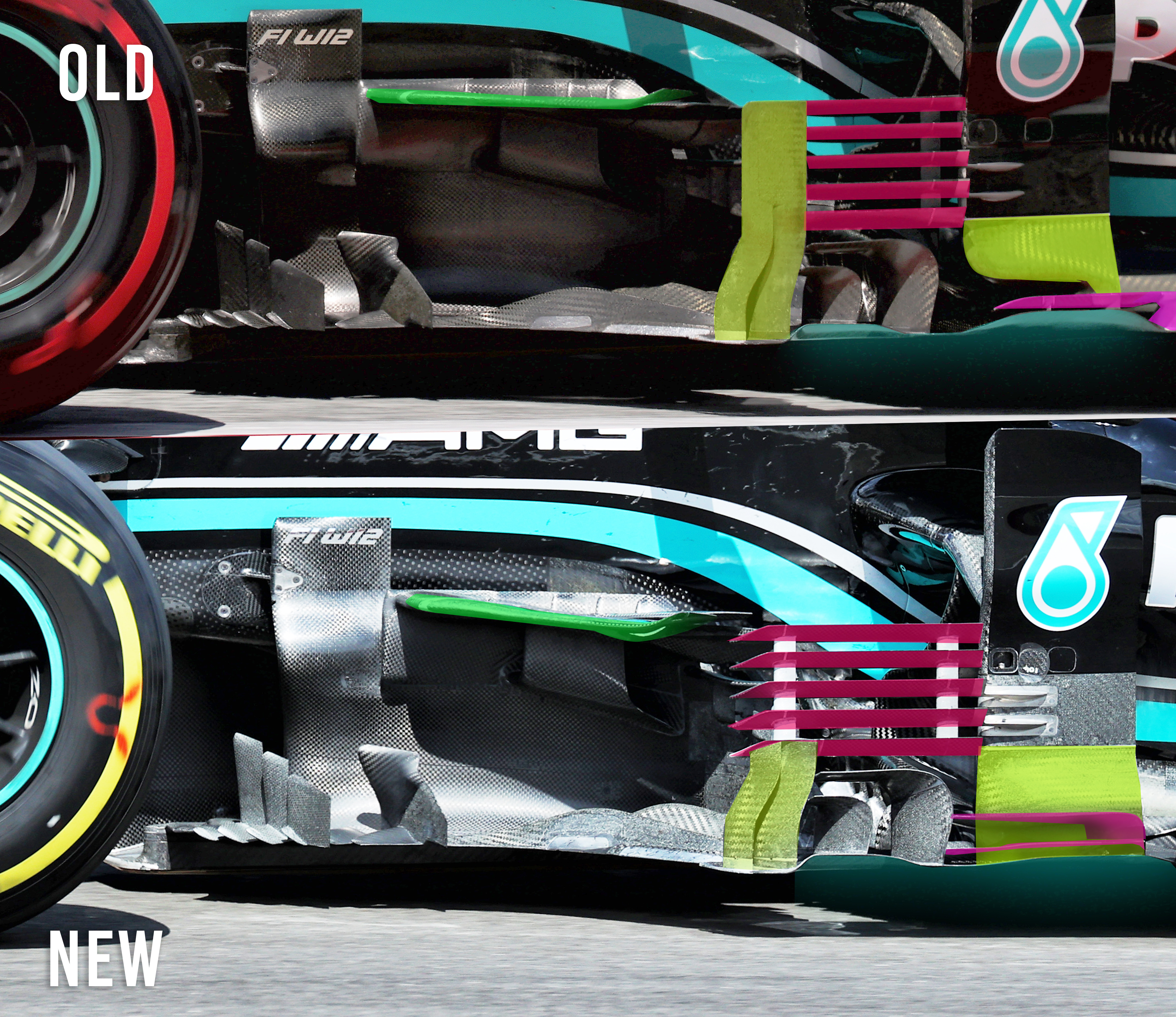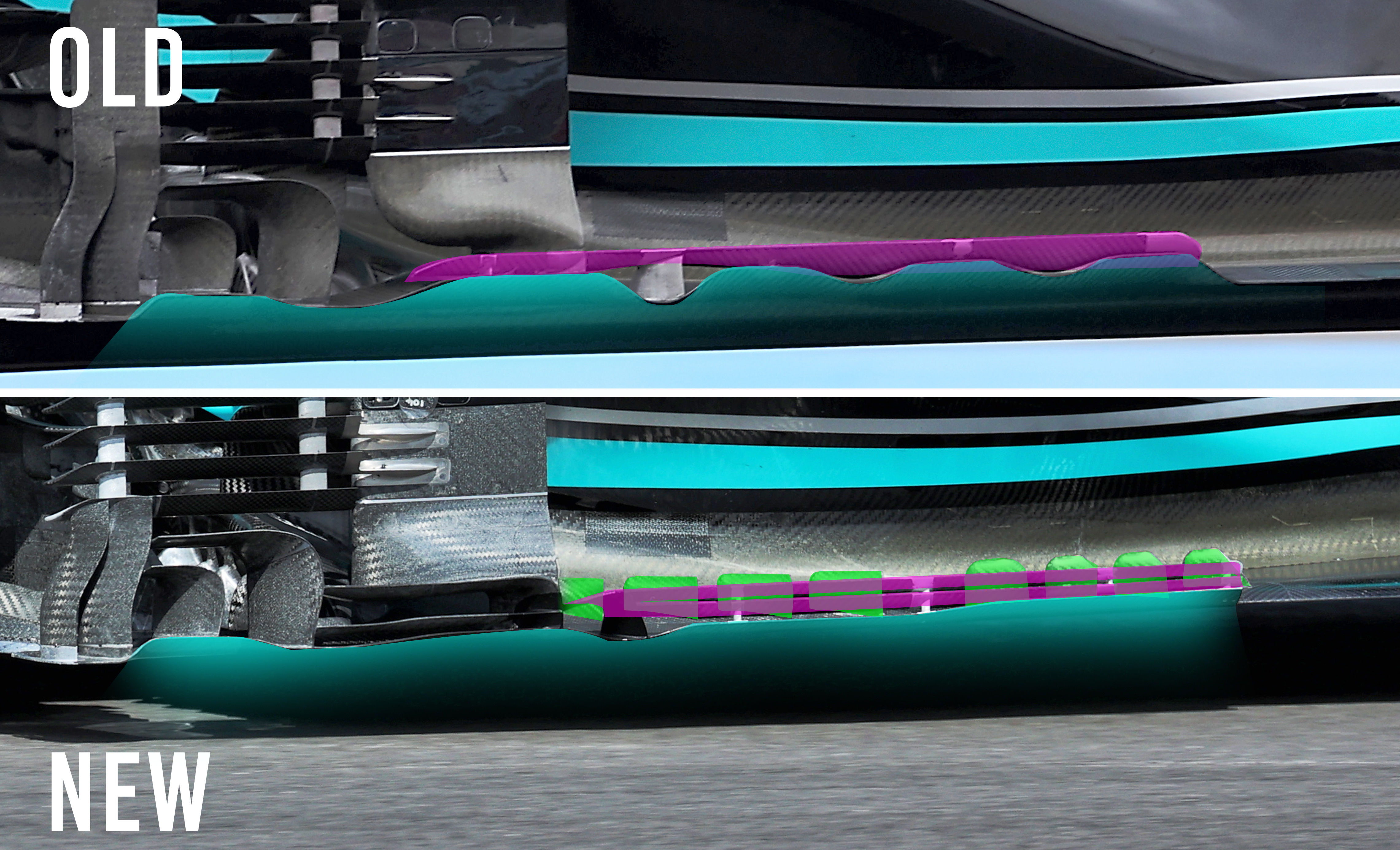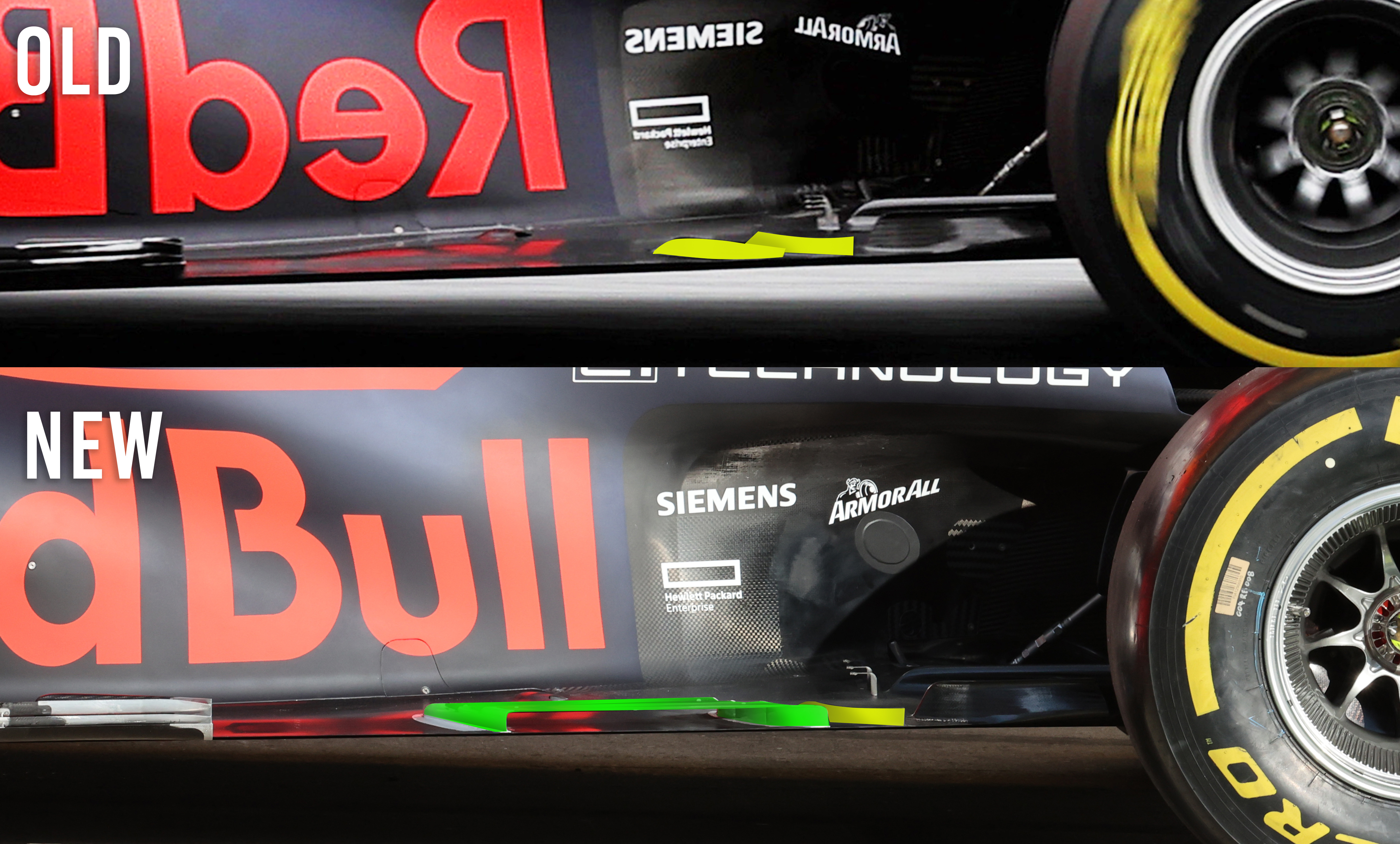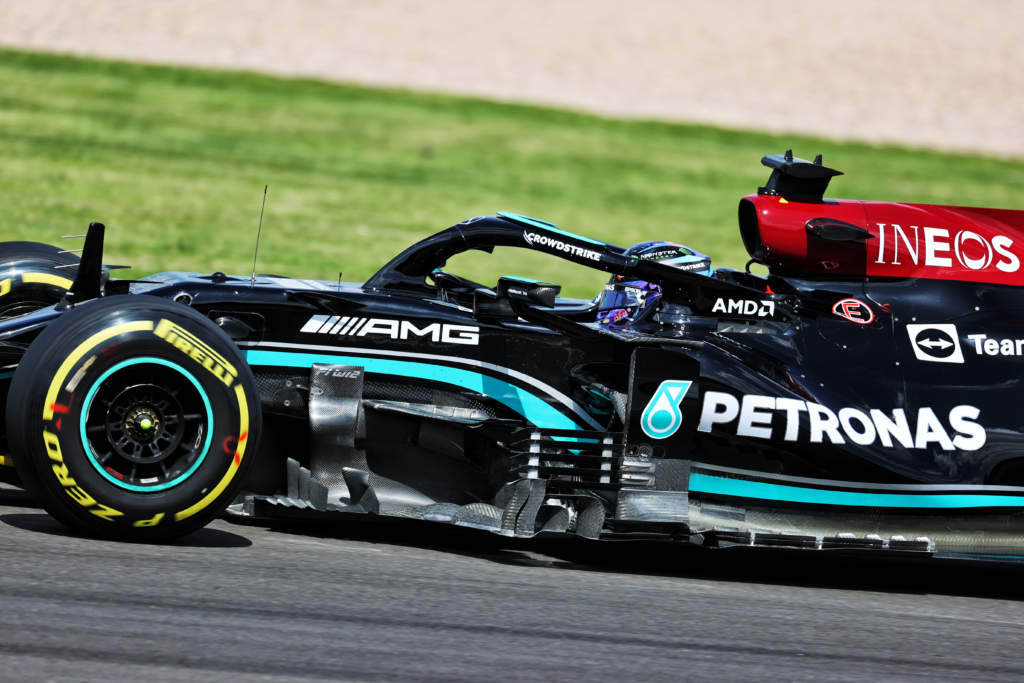Up Next

It will be very interesting to see if the Mercedes aerodynamic upgrades at this weekend’s British Grand Prix allow it to catch up with its chief Formula 1 title rival Red Bull.
The gap isn’t so big, so it only needs a couple of tenths to be right back up there.
The main changes are around the bargeboard area. It is good to see that Mercedes has followed the direction the other teams have been working on since these cars hit the track at the start of the year.

Mercedes has now changed the aerodynamic flow structure from its initial design, which pulls the flow out from underneath the raised front of the chassis and took it around the undercut sidepod, to a version aimed at helping the underfloor and in turn the diffuser by turning the airflow upwards along the side of the floors front corner.
This increases the performance of that critical front corner of the underfloor. All this airflow structure works together but you can influence its priorities.
We all look at the rear of the car and call that section between the rear wheels the diffuser but in fact the complete extremity of the floor that can be used as a diffuser.
Any gizmos that can be added to extract airflow from underneath the car will increase – or should it be decrease – the low pressure under the complete floor.
That said you need to have enough flow to reduce the risk of airflow separation which would very quickly lead to inconsistency.

Mercedes has done away with the wavy outer edge on the floor and now has a more uniform turned-up section with the common twin-element turning vane above its outer edge.
Also gone are some of the vertical bargeboard vanes, which have been replaced with longer horizontal vanes. This is again to help the front corner of the floor work as a diffuser in its own right. Work this area harder and the performance of the complete underfloor will be enhanced.
There were also some subtle changes to the inboard end of the boomerang wing. It’s now more three dimensional than it was.
However, the biggest surprise is how long it has taken to come up with this package given the low-rake concept of the Mercedes seemed to struggle more than the high-rake cars.
It’s easy to say the low rake cars reduce the diffuser volume and limits the downforce-generating potential, but for me, it was the sealing devices that were taken away and Mercedes didn’t get as creative at coming up with a replacement as others did.
While Mercedes has been working on its developments, the others haven’t been standing still. Red Bull has come up with its own version of how to increase the performance of the underfloor.

It looks like a bit of an add on, so I wouldn’t be surprised if it was just a simple test piece. But either way, it will be interesting to see if it stays on for the weekend.
It looks like a very simple three-element wing section focused on extracting airflow from one specific area of the underfloor, which is not really a normal way of doing things as it can lead to airflow separation problems.
But hey who am I to question Adrian Newey?





